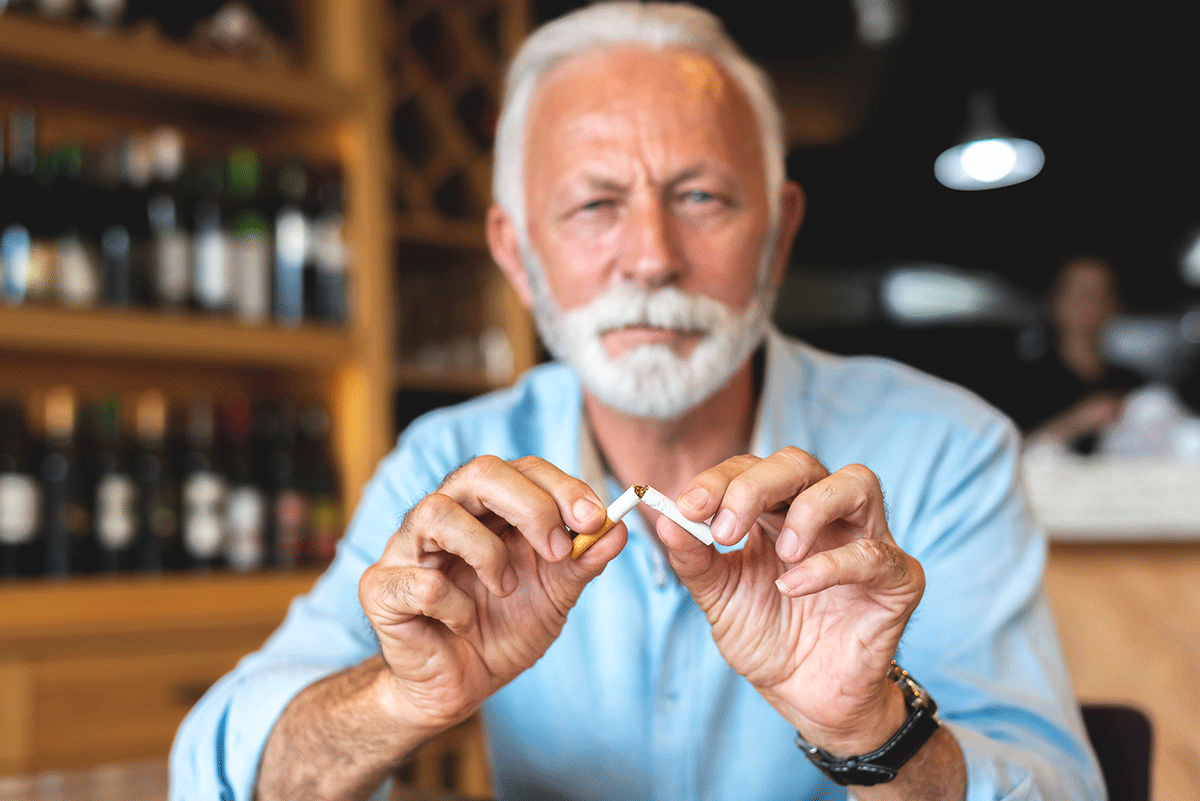Nicotine is considered one of the most addictive drugs there is, and almost a quarter of a million people suffer from a cigarette addiction or dependence on nicotine that is delivered in another way—through vaping, snuff, or dip. Unfortunately, smoking is on the rise among young people. This should come as no surprise. Cigarettes, other tobacco products, and nicotine vapes are sold in most grocery stores, many pharmacies, and every gas station and convenience store. As a result, quitting can be quite difficult. Constant reminders and easy, legal accessibility do not help you begin your recovery from nicotine dependence. One of the most effective ways to quit smoking is to enter a nicotine addiction treatment program.
Pennsylvania Adult & Teen Challenge (PAATC) helps teens and adults free themselves of nicotine dependence safely and with the support of both peers and clinicians who understand the challenges of the endeavor. Let PAATC help you leave nicotine behind. Learn how our nicotine addiction treatment program can support you. Call 888.546.2579 today or complete this online form to connect with a staff member.
What Is Nicotine Dependence?
The tobacco in cigarettes, cigars, dip, and snuff, as well as vaping products, contain an active and addictive chemical called nicotine. Nicotine affects the adrenal glands, causing a spike in adrenaline, which speeds up the metabolism. Contrary to a misconception held by many, nicotine does not soothe stress and anxiety but stimulates it. The interactions nicotine has within the brain also affect body and brain chemistry, triggering the production of neurotransmitters, similar to the effects of other drugs, like opioids and cocaine.
The rush of good feelings that a smoker, for example, feels when lighting up is the result of dopamine, which causes pleasure, while the adrenaline results in a sensation of intense alertness.
The brain and adrenals become overwhelmed by the effects of nicotine and go offline. You become dependent on the drug to trigger the production of dopamine. Your body goes into physical withdrawal when you do not have access to nicotine.
What Happens When You Quit Smoking?
For smokers or people with another nicotine-delivery habit, the main challenge with quitting is withdrawal from the drug nicotine. There is a strong psychological component as well. The physical habit of lighting up a cigarette or turning on your vape has a strong pull on those with nicotine dependence. Many triggers throughout the day make a smoker want to light up. Those can be:
- Upon waking
- After a meal
- With coffee
- With alcohol
- While driving
- When bored
- While concentrating
People who try to quit smoking find that even if they continue to receive nicotine through a patch, they are reminded constantly of all the moments in the day when they would light up.
Quitting is not just about stopping smoking. As long as you still receive nicotine in your bloodstream you are dependent on it. What happens when nicotine is withheld—no patches? No chewing gum? Some of the symptoms of withdrawing from nicotine addiction are:
- Powerful cravings
- Nausea
- Headaches
- Restlessness
- Increased hunger and appetite
- Anxiety
- Depression
- Outbursts of unprovoked anger
- Difficulty focusing
- Sleep disturbance
Treating nicotine dependence is not just about quitting smoking. It is about detoxing from nicotine completely. In a professional rehab setting, your withdrawal can be medically managed. You will receive medications that ease the worst of your physical symptoms as your body rids itself of nicotine.
Recover from Nicotine Addiction with Help from PAATC
The staff at PAATC understands addiction. With 60+ years in the rehab business and a highly trained professional staff with years of experience, PAATC can help you with your cigarette addiction, your nicotine dependence, and your desire to find release from a dangerous habit.
Find out how we can help you with your quest to live addiction-free. Reach out via phone—888.546.2579—or through our online form.







